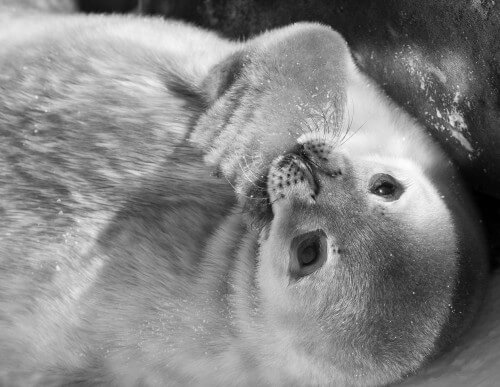The distress calls of mammal pups are surprisingly similar

A sharp cry pierces the air. Immediately the worried mother arrives, a doe expecting to find her howling lead. But the voice comes from a loudspeaker and it is not Ofer's voice at all, but the voice of a seal pup.
Since moose and seals do not share the same habitat, mother moose does not know what the screams of a baby seal sound like. This reasoning prompted biologists Susan Lingle of the University of Winnipeg and Tobias Reed of Midwestern University to conduct the sound experiment. So why did mother Ayala react with concern?
In an experiment they conducted on a Canadian farm during two summer seasons, the researchers played herds of two species of elk recordings of crying pups of various mammals: donkeys, marmots, bats, seals, sea lions, domestic cats, dogs and human babies. When Lingle and Reid examined the responses of mother does, they found that as long as the fundamental frequency of the sounds made was similar to that of their offspring's calls, they approached the speaker and looked for the fruit in their bellies. Such a reaction shows very similar characteristics in the cries of most young mammals. (The mother doe did not respond to white noise, bird calls, or coyote barking.) Lingle and Reid published their findings in October 2014 in the scientific journal American Naturalist.
Researchers have previously suggested that sounds made by different animals in similar situations, such as pain calls, for example, share vocal characteristics. "As humans, we often 'feel' the cries of young animals," Lingle says. This empathy may arise because the sounds that express emotions in mammals are similar sounds.
Psychologist David Raby from the University of Sussex in England, who studies the evolution of communication, is not surprised by these findings. From the point of view of the victim, it pays to attract the attention of any caregiver, which can increase his chances of survival. And as for the parents, Rabbi says, "it pays more to respond to anything that vaguely resembles a baby's cry of distress." If there is a predator in the area, the parent cannot waste time deciding whether the baby crying for help is his. The price of ignoring the cry is too high.
These results can also explain some cases of cross-species adoption in the wild. A mother who has lost her baby and still has hormones associated with motherhood in her bloodstream, Lingle says, can care for someone who needs protection when she hears his call, no matter what he looks like.
The article was published with the permission of Scientific American Israel
